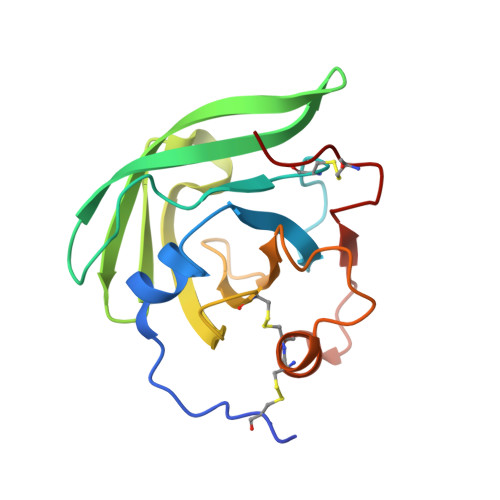Structure, function, and evolution of biogenic amine-binding proteins in soft ticks.
Mans, B.J., Ribeiro, J.M., Andersen, J.F.(2008) J Biological Chem 283: 18721-18733
- PubMed: 18445596
- DOI: https://doi.org/10.1074/jbc.M800188200
- Primary Citation of Related Structures:
3BRN, 3BS2, 3BU1, 3BU9 - PubMed Abstract:
Two highly abundant lipocalins, monomine and monotonin, have been isolated from the salivary gland of the soft tick Argas monolakensis and shown to bind histamine and 5-hydroxytryptamine (5-HT), respectively. The crystal structures of monomine and a paralog of monotonin were determined in the presence of ligands to compare the determinants of ligand binding. Both the structures and binding measurements indicate that the proteins have a single binding site rather than the two sites previously described for the female-specific histamine-binding protein (FS-HBP), the histamine-binding lipocalin of the tick Rhipicephalus appendiculatus. The binding sites of monomine and monotonin are similar to the lower, low affinity site of FS-HBP. The interaction of the protein with the aliphatic amine group of the ligand is very similar for the all of the proteins, whereas specificity is determined by interactions with the aromatic portion of the ligand. Interestingly, protein interaction with the imidazole ring of histamine differs significantly between the low affinity binding site of FS-HBP and monomine, suggesting that histamine binding has evolved independently in the two lineages. From the conserved features of these proteins, a tick lipocalin biogenic amine-binding motif could be derived that was used to predict biogenic amine-binding function in other tick lipocalins. Heterologous expression of genes from salivary gland libraries led to the discovery of biogenic amine-binding proteins in soft (Ornithodoros) and hard (Ixodes) tick genera. The data generated were used to reconstruct the most probable evolutionary pathway for the evolution of biogenic amine-binding in tick lipocalins.
- Laboratory for Malaria and Vector Research, NIAID, National Institutes of Health, Rockville, Maryland 20852, USA.
Organizational Affiliation:

















